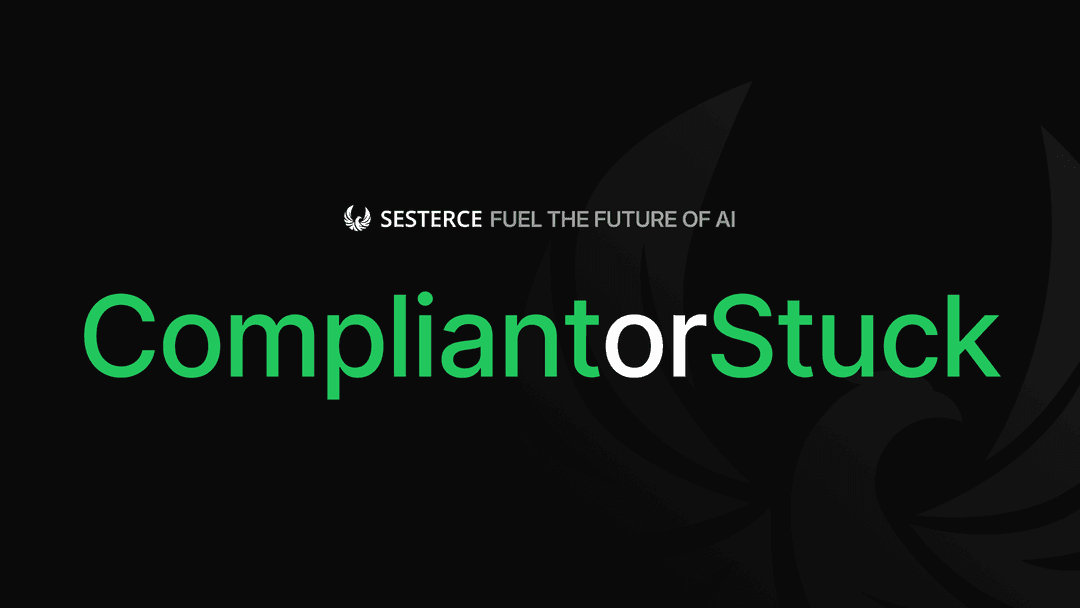Transitioning to AI-ready infrastructure: why scalability matters
AI demands more than traditional IT. Learn how scalable AI infrastructure accelerates model training, reduces costs and unlocks real-time insights.

The infrastructure shift: AI demands a new approach
Artificial intelligence is reshaping industries worldwide, driving breakthroughs in healthcare, finance, manufacturing, and beyond. Yet, many organizations find their infrastructure struggling to keep pace. Traditional IT systems, designed for static workloads, are ill-equipped to handle the high-intensity, dynamic demands of AI and machine learning. As a result, AI adoption is often slowed by long model training times, inefficient resource use, and mounting costs that prevent organizations from scaling effectively. The transition to AI-ready, scalable infrastructure is no longer optional—it’s essential for businesses looking to stay ahead.
The hidden costs of legacy infrastructure
Many businesses still rely on conventional infrastructure that lacks the flexibility to support AI workloads efficiently. The challenge isn’t just about processing power; it’s about how resources are managed, how data flows, and how quickly insights can be delivered. Companies working with AI often face computational bottlenecks that extend model training times, making real-time AI applications impractical. Inference performance suffers, and decision-making slows as organizations struggle with infrastructure that wasn’t designed for the complexity of deep learning and data-driven intelligence.
Beyond performance issues, cost inefficiencies pose another major challenge. Without an adaptive, scalable compute model, businesses must either overprovision resources—leading to wasted capacity and unnecessary expenses—or underprovision, resulting in delays and lost opportunities. Meanwhile, AI-driven workloads require constant access to large, complex datasets, and traditional storage and networking solutions frequently create I/O bottlenecks, limiting the ability to process and analyze data in real time.
Making the shift: what defines an AI-ready infrastructure?
Transitioning to an AI-first infrastructure requires rethinking the core components of compute, storage, and networking. Scalable AI environments are built to eliminate bottlenecks, optimize resource allocation, and ensure cost efficiency. A truly AI-ready infrastructure is one that adapts dynamically, enabling faster training cycles, seamless data integration, and real-time AI processing.
The key elements of AI-optimized infrastructure
A successful transition starts with on-demand access to high-performance compute resources, including NVIDIA GPUs designed for deep learning and machine learning workloads. This ensures that models can be trained faster and inference tasks can be executed without latency. Organizations also need a cloud-native, elastic environment capable of scaling up or down in real-time, preventing overprovisioning while still maintaining performance consistency.
Data infrastructure plays an equally crucial role. High-speed, low-latency networking ensures that AI models can process vast datasets efficiently, while distributed computing frameworks enable workloads to be executed across multiple regions without performance degradation. Cost efficiency is another critical factor. Rather than maintaining idle, expensive resources, businesses should leverage pay-as-you-go compute models, optimizing GPU usage while maintaining financial flexibility.
Real-world impact: scaling AI in the Pharmaceutical industry
A leading biotech company recently faced significant challenges in accelerating its AI-driven drug discovery pipeline. Traditional infrastructure constrained their ability to process molecular simulations quickly, delaying research and increasing costs. By transitioning to a scalable, AI-ready cloud, they were able to cut model training times by 40%, significantly improving their R&D efficiency.
Their new infrastructure enabled them to analyze clinical trial data 30% more efficiently, reducing the time needed to bring new treatments to market. Additionally, their cost structure improved, with 25% savings on compute resources through optimized GPU allocation. This transformation not only accelerated innovation but also positioned them ahead of competitors in an increasingly AI-driven industry.
Building for the future: how to transition to scalable AI
Moving from rigid IT infrastructure to an AI-optimized environment requires a strategic approach. Organizations should start by evaluating their current workloads, identifying compute-intensive tasks that demand greater scalability. Ensuring that storage and networking are optimized for high-speed data access is equally crucial, preventing the slowdowns that hinder AI applications. By adopting a flexible, cloud-based GPU model, businesses can gain access to cutting-edge hardware without the burden of high upfront investment.
As AI adoption continues to grow, future-proofing infrastructure will be the key to maintaining a competitive edge. Scalable AI environments don’t just improve efficiency—they unlock new possibilities for innovation, allowing businesses to move faster, adapt to changing demands, and drive real impact with AI.
Explore our Latest Posts
What Companies
Build with Sesterce.
Leading AI companies rely on Sesterce's infrastructure to power their most demanding workloads. Our high-performance platform enables organizations to deploy AI at scale, from breakthrough drug discovery to real-time fraud detection.
Health
Accelerate drugs recovery
Finance
Improve risk analysis and fraud detection
Consulting
Analyze market trends and provide strategic insights.
Logistic & Transports
Predict freight flow analysis, route optimization and fleet maintenance
Energy and Telecoms
Optimize performance, improve coverage and reduce downtime
Media & Entertainment
Personalize your content by analyzing consumer preferences.
Supercharge your ML workflow now.
Sesterce powers the world's best AI companies, from bare metal infrastructures to lightning fast inference.




